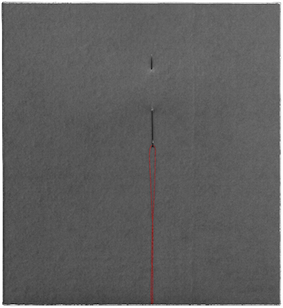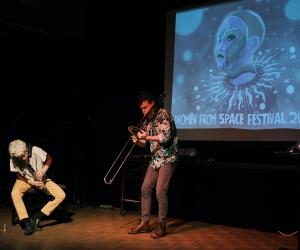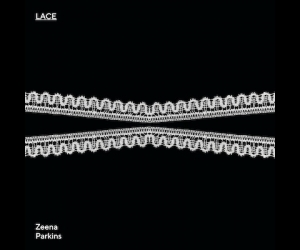
The phenomenological aspect of sound has long been the foremost concern of percussionist and composer Sarah Hennies’ work. While her music often exploits the way we hear, it never comes off as some mere exercise.
Gather & Release bends her fascination with the psychological ramifications of listening into an unprecedented shape. This ambitious new work posits an intersection between austere abstraction, the therapeutic realm, and personal narratives. Its oscillating pulses, murmuring textures, and three-dimensional warpings of psychoacoustic space are encoded with subliminal messages of deep personal significance, haunted by the spectres of pain, trauma, confusion, and bereavement. Her proximity to the material doesn’t translate to typical markers of emotion in music, though.
Gather, the first of two sections of identical lengths, begins decisively but gently with white noise, a sort of primer for the ear that prevents the listener from clearly identifying the subsequent pure tones that emerge from behind this shroud. It’s almost as though it’s geared towards simulating aural fatigue, except the bleary surface actually ensconces the entire ear at points, revealing a subtle spatial dynamism
Release is more explicit in its personal ties. Its initial section contrasts the noisy saturation of Gather’s final sections with eight minutes of muted radiance—sine-tone-enhanced vibraphone. Following in the spirit of the prior tracks’ sudden, yet infrequent, shifts, Release soon switches gears, announced by the wide-panned chirp of a clave sample assuming the foreground. This tense metronomic sound is also used in bilateral stimulation, a staple technique of EMDR psychotherapy, which aims to neutralize the patient’s disturbing memories. And soon, an unsettling flurry of events surge into the auditory field—perhaps most notably, a recording of the composer’s grandfather reciting poetry.
Hennies’ work is mesmerizing due to both its rich immersiveness and its taciturn, steadfastly tenuous sense of form. Gather & Release certainly isn’t an easy listen, but the questions it poses for the listener invite repeated returnx for closer and more rapt observation.


